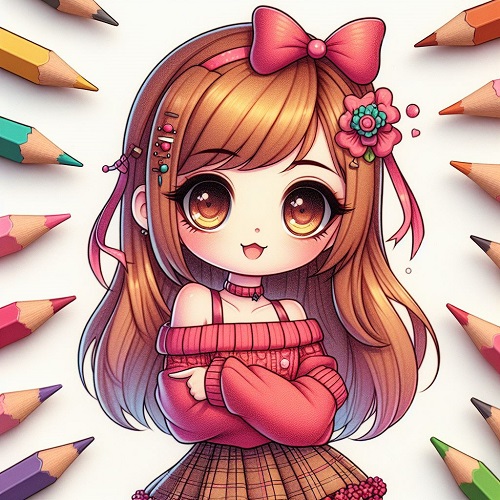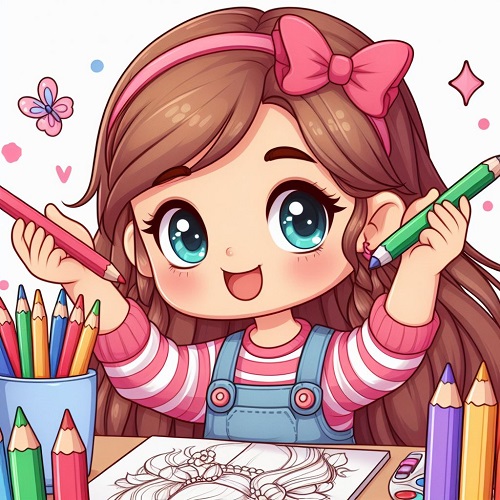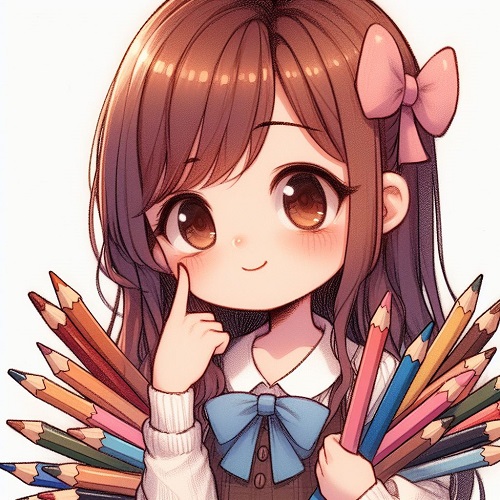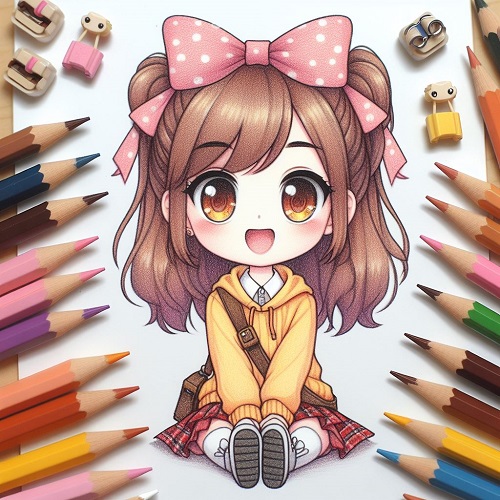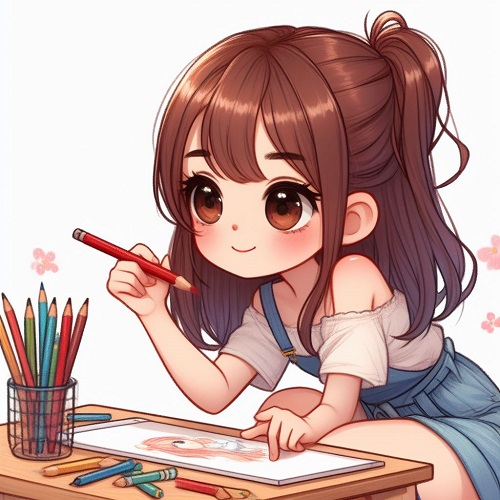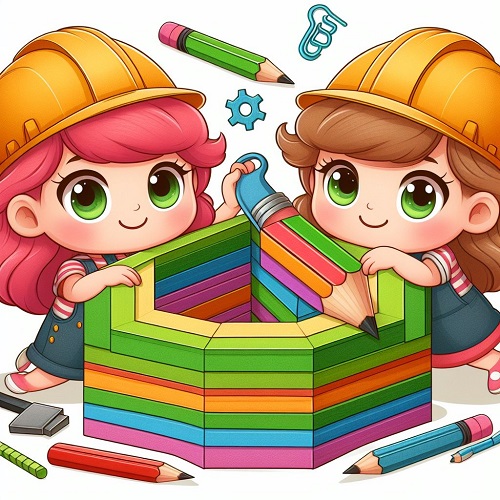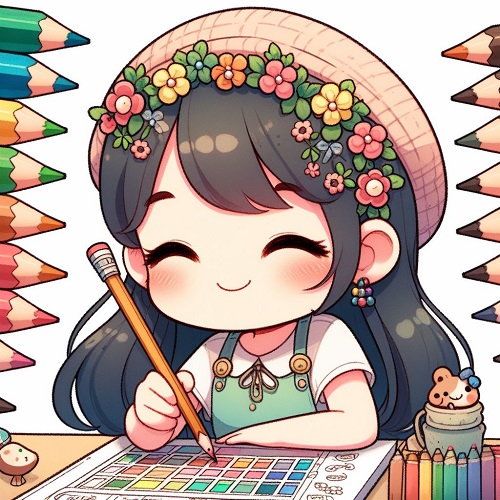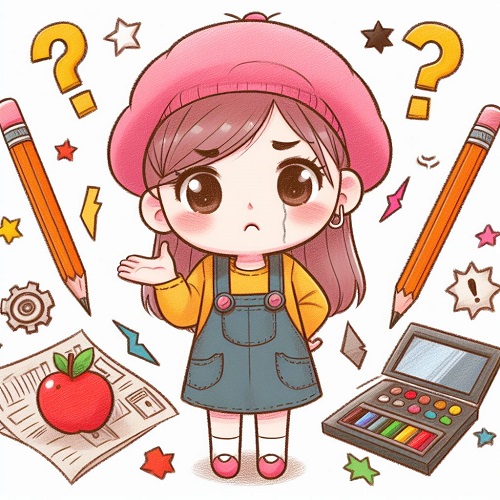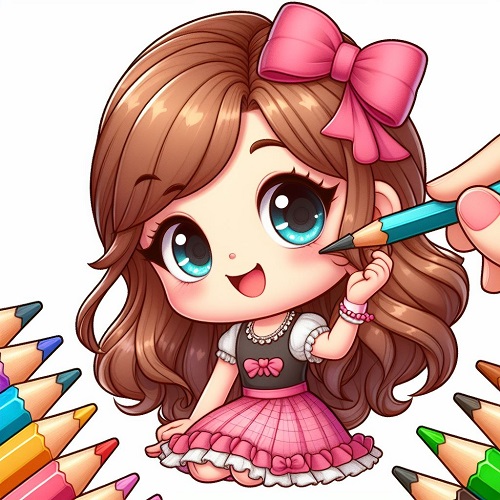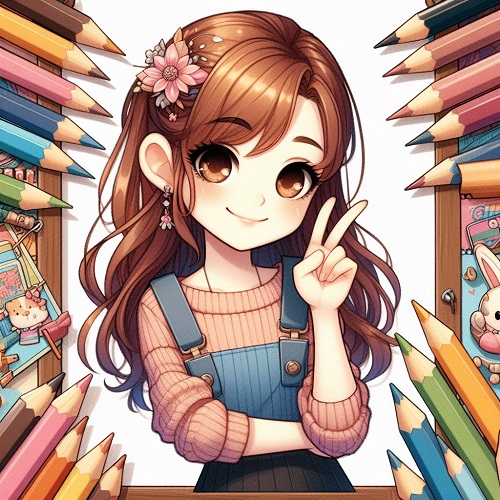Unleash Your Creativity: A Comprehensive Step-by-Step Guide to Colored Pencil Drawing
Welcome to the enchanting world of colored pencil drawing, where creativity knows no bounds. In this detailed guide, we will walk you through every aspect of the process, providing insights and tips to help you create vibrant and captivating artworks. Whether you are a beginner seeking guidance or an experienced artist looking for new techniques, this guide is designed to elevate your colored pencil drawing skills.
Getting Started with Colored Pencil Drawing
1.1 Understanding Colored Pencils
Colored pencils come in various types, each offering unique characteristics. Wax-based pencils provide a creamy texture, ideal for blending and layering, while oil-based pencils offer a more robust color application. Understanding these differences allows you to choose the right pencil for your artistic goals, whether it be creating soft, subtle gradients or bold, expressive strokes.
FAQ: What is the difference between wax-based and oil-based colored pencils?
Wax-based pencils contain a higher wax content, offering a smoother texture and better blending capabilities. On the other hand, oil-based pencils have a higher pigment concentration, resulting in more intense color application. Experiment with both to discover which suits your style best.
1.2 Essential Tools and Materials
Equipping yourself with the right tools is crucial for a successful colored pencil drawing experience. Invest in high-quality paper or sketchpads designed for colored pencils, ensuring the texture and weight are suitable for layering. Don’t forget essential accessories like a reliable sharpener and eraser to maintain precision throughout your artistic journey.
FAQ: Can I use any paper for colored pencil drawing?
While you can use various papers, it’s recommended to choose a medium to heavyweight paper with a textured surface. This helps the colored pencil adhere better and allows for layering without damaging the paper fibers.
Choosing Your Subject
2.1 Finding Inspiration
Inspiration for colored pencil drawings can be found everywhere, from the beauty of nature to the objects in your daily life. Take a moment to observe your surroundings, looking for elements that evoke emotion or spark your imagination. The ordinary can be transformed into the extraordinary with a creative perspective.
FAQ: How do I find inspiration for my colored pencil drawings?
Inspiration can come from personal experiences, emotions, or even random objects. Experiment with different subjects and find joy in the process. Sometimes, the most mundane items can become extraordinary works of art.
2.2 Selecting a Manageable Subject
For beginners, selecting a manageable subject is key to building confidence. Choose subjects with clear shapes and defined features, gradually progressing to more complex scenes as your skills develop. Simplify intricate details, focusing on capturing the essence and mood of your chosen subject.
FAQ: What makes a subject manageable for a beginner?
A manageable subject for beginners typically has clear lines, distinct shapes, and minimal intricate details. Objects like fruits, flowers, or simple landscapes are great starting points for honing your colored pencil skills.
2.3 Playing with Colors
Experimenting with colors is an integral part of colored pencil drawing. Consider the emotions you want to convey in your artwork and select a color palette that complements your subject. Understanding color theory will help you create harmonious and visually appealing compositions.
FAQ: How do I choose the right colors for my drawing?
Consider the mood and emotions you want to convey. Warm colors evoke energy and passion, while cool colors bring a sense of calmness. Experiment with color combinations and observe how they interact before applying them to your artwork.
Basic Colored Pencil Techniques
3.1 Mastering Different Strokes
Colored pencil strokes are the building blocks of your drawing. Hatching and cross-hatching techniques involve creating parallel or intersecting lines to build up tones and textures. Experiment with varying pressure and stroke directions to achieve different effects.
FAQ: What is the difference between hatching and cross-hatching?
Hatching involves drawing parallel lines, while cross-hatching involves intersecting these lines to create denser tones. Both techniques are fundamental for shading and adding depth to your colored pencil drawings.
3.2 Blending Like a Pro
Blending is a crucial skill in colored pencil drawing, allowing you to achieve smooth transitions between colors. Use blending stumps for a traditional approach or explore solvents like odorless mineral spirits for a more painterly effect. Practice blending to create seamless gradients and add a professional touch to your artwork.
FAQ: Can I blend colored pencils without using a blending stump or solvent?
Yes, you can blend colored pencils using the layering technique. Apply multiple layers of colors with varying pressure to create smooth transitions. However, using blending stumps or solvents can enhance the blending process and achieve a more polished result.
Sketching Your Drawing
4.1 The Importance of a Preliminary Sketch
A preliminary sketch is the foundation of a successful colored pencil drawing. Take time to outline your subject, ensuring proportions and composition are accurate before moving on to the final drawing. This step helps you visualize the final outcome and make necessary adjustments.
FAQ: Can I skip the preliminary sketch and start directly with colored pencils?
While some experienced artists may work directly with colored pencils, beginners benefit from a preliminary sketch to plan their composition and proportions. It acts as a guide, reducing the likelihood of errors in the final drawing.
4.2 Refining Details
Refining details involves going beyond the initial sketch and adding intricate elements to your drawing. Pay attention to small nuances and features that bring your subject to life. Refining details enhances the realism and overall impact of your colored pencil artwork.
FAQ: How can I improve my attention to detail in colored pencil drawing?
Practice observational drawing by studying your subject closely. Take note of small details and gradually incorporate them into your drawings. As you progress, your ability to capture intricate details will naturally improve.
Building Layers and Creating Texture
5.1 Layering for Vibrancy
Layering is a key technique for achieving vibrant colors and depth in colored pencil drawings. Start with light layers, gradually building up intensity. Experiment with different color combinations to create dynamic and visually engaging compositions.
FAQ: How many layers of colored pencil should I apply?
The number of layers depends on your desired level of intensity and the paper’s texture. Experiment with multiple layers, ensuring each one is applied evenly. Be cautious not to exceed the paper’s saturation point, which may result in a waxy finish.
5.2 Texture Techniques
Creating texture adds a tactile element to your drawings, making them visually dynamic. Experiment with various techniques, such as stippling, scumbling, or creating fur and foliage textures. Understanding how to portray different surfaces enhances the overall realism of your colored pencil artwork.
FAQ: Can I create texture with colored pencils on smooth paper?
While textured paper enhances the natural texture of colored pencil drawings, you can still create texture on smooth paper using techniques like layering and varying pressure. Experiment with different strokes to simulate textures effectively.
Mastering Color Theory
6.1 Understanding the Color Wheel
The color wheel is a powerful tool for artists. Familiarize yourself with primary, secondary, and tertiary colors, as well as complementary and analogous color schemes. This understanding allows you to create harmonious and visually striking color combinations in your colored pencil drawings.
FAQ: How can I use the color wheel to improve my drawings?
Utilize the color wheel to select complementary colors for shading and highlighting. Experiment with analogous colors to create cohesive and harmonious compositions. Understanding the color wheel enhances your ability to convey specific moods and atmospheres in your artwork.
6.2 Achieving Harmony and Balance
Harmony and balance in colored pencil drawings are achieved by thoughtful color selection and placement. Balance warm and cool tones and avoid overwhelming your composition with too many vibrant colors. Strive for a visually pleasing arrangement that enhances the overall impact of your artwork.
FAQ: Can I use only one color for my entire drawing?
While monochromatic drawings can be stunning, incorporating a variety of colors adds depth and interest to your artwork. Experiment with limited color palettes to maintain harmony while still creating visually captivating compositions.
Troubleshooting Common Issues
7.1 Dealing with Pencil Smudges
Pencil smudges can be frustrating but are avoidable with proper techniques. Avoid resting your hand directly on the paper and consider using a clean sheet of paper as a barrier. Additionally, strategic placement of paper under your hand can prevent unwanted smudges.
FAQ: How do I remove pencil smudges without damaging my drawing?
Gently erase smudges with a clean eraser or use a kneaded eraser to lift excess graphite. Be cautious not to apply too much pressure, as this can damage the paper surface.
7.2 Correcting Mistakes
Mistakes are part of the artistic process. Correcting them without compromising the overall quality of your drawing is essential. Use a clean eraser to carefully lift unwanted pencil marks and employ fine-tipped pencils for precision in correction.
FAQ: Can I use correction fluid on colored pencil drawings?
Correction fluid is not recommended for colored pencil drawings, as it can alter the texture and color of the paper. Instead, focus on preventive measures and use erasers for corrections.
7.3 Salvaging Overworked Areas
If an area of your drawing appears overworked, don’t panic. Assess the level of saturation and carefully blend additional layers to achieve a smoother finish. Patience and gradual adjustments can often salvage even the most challenging areas.
FAQ: How can I avoid overworking my colored pencil drawing?
Take breaks during your drawing process to evaluate the overall composition. Sometimes, stepping away and returning with fresh eyes can help you identify areas that may need adjustment.
Finalizing Your Colored Pencil Drawing
8.1 Adding Finishing Touches
Once the main elements are in place, add finishing touches to elevate your drawing. Use fine liners to outline key features and enhance the overall definition. Carefully refine highlights and shadows to create a polished and professional appearance.
FAQ: Can I use ink pens for outlining in colored pencil drawings?
Yes, using fine ink pens for outlining is a common technique in colored pencil drawing. However, ensure the ink is compatible with your chosen paper to prevent bleeding or smudging.
8.2 Evaluating Your Work
Step back and evaluate your artwork with a critical eye. Assess the overall composition, color balance, and level of detail. Take note of areas that stand out positively and areas that may need further refinement.
FAQ: How can I objectively evaluate my own artwork?
Consider taking a photo of your drawing or viewing it in a mirror. This fresh perspective can help you identify areas for improvement more objectively. Seeking feedback from fellow artists is also valuable.
8.3 Completing Your Masterpiece
Celebrate the completion of your colored pencil drawing. Acknowledge the skills you’ve developed throughout the process and the unique qualities that make your artwork special. Display your masterpiece proudly, whether online or in a physical space.
FAQ: When is my colored pencil drawing truly complete?
Your drawing is complete when you feel satisfied with the overall result. Trust your instincts, but also be open to continuous improvement. As you grow as an artist, your definition of completion may evolve.
Showcasing Your Artwork
9.1 Photographing or Scanning Your Drawing
Capturing your artwork accurately is crucial for showcasing it to the world. Use natural light or diffuse artificial light when photographing or scanning your drawing. Adjust the settings to ensure colors are true to life, allowing viewers to appreciate the nuances of your artwork.
FAQ: Can I use a smartphone for photographing my colored pencil drawings?
Yes, smartphones with high-quality cameras are suitable for photographing colored pencil drawings. Ensure the camera is steady, and use a photo editing app to adjust brightness, contrast, and color balance if needed.
9.2 Sharing on Social Media
Share your colored pencil drawings on social media platforms to connect with the vibrant art community. Engage with fellow artists, seek constructive feedback, and discover new techniques. Embrace the opportunity to inspire and be inspired by the diverse creativity within the artistic community.
FAQ: How can I protect my artwork when sharing it online?
Consider watermarking your images or sharing lower-resolution versions to deter unauthorized use. Be selective about the platforms you choose, and familiarize yourself with privacy settings to control the visibility of your artwork.
9.3 Building a Creative Network
Connect with other artists to build a supportive and inspiring creative network. Participate in online forums, attend art events, and engage in collaborative projects. Sharing experiences, learning from others, and providing encouragement creates a dynamic community that fosters artistic growth.
FAQ: How can I provide constructive feedback to other artists?
When providing feedback, focus on specific aspects of the artwork, such as composition, color use, or technical skills. Be respectful and offer suggestions for improvement, creating a positive and supportive exchange within the artistic community.
Conclusion
As you conclude your colored pencil drawing journey, reflect on the skills you’ve acquired and the unique artworks you’ve created. Unleash your creativity and embrace the joy of expressing yourself through the vibrant medium of colored pencils. Whether you’re a beginner or an experienced artist, this comprehensive guide is a stepping stone to a world of endless possibilities. Let your imagination soar, and may every stroke bring you closer to becoming a true master of colored pencil art.
- Mastering the Art: A Comprehensive Guide to Pokemon Pencil Drawing
- Mastering the Art of Pencil Drawing on Canvas: Your Comprehensive Guide
- Unveiling Artistry: A Comprehensive Guide to Horse Pencil Drawings
- Mastering the Art of Pencil Drawing Cartoon Characters: A Comprehensive Guide
- Unleash Your Creativity: A Comprehensive Step-by-Step Guide to Colored Pencil Drawing
- Unleashing the Depths of Creativity: A Comprehensive Guide to Octopus Pencil Drawing
- Unlocking the Artistry: A Deep Dive into Black Pencil Drawing
- Mastering the Art of Tree Pencil Drawing: A Step-by-Step Guide for Aspiring Artists
- Dive into Creativity: The Magic of Underwater Pencil Drawing
- Unleashing Creativity: Mastering the Art of 2B Pencil Drawing

